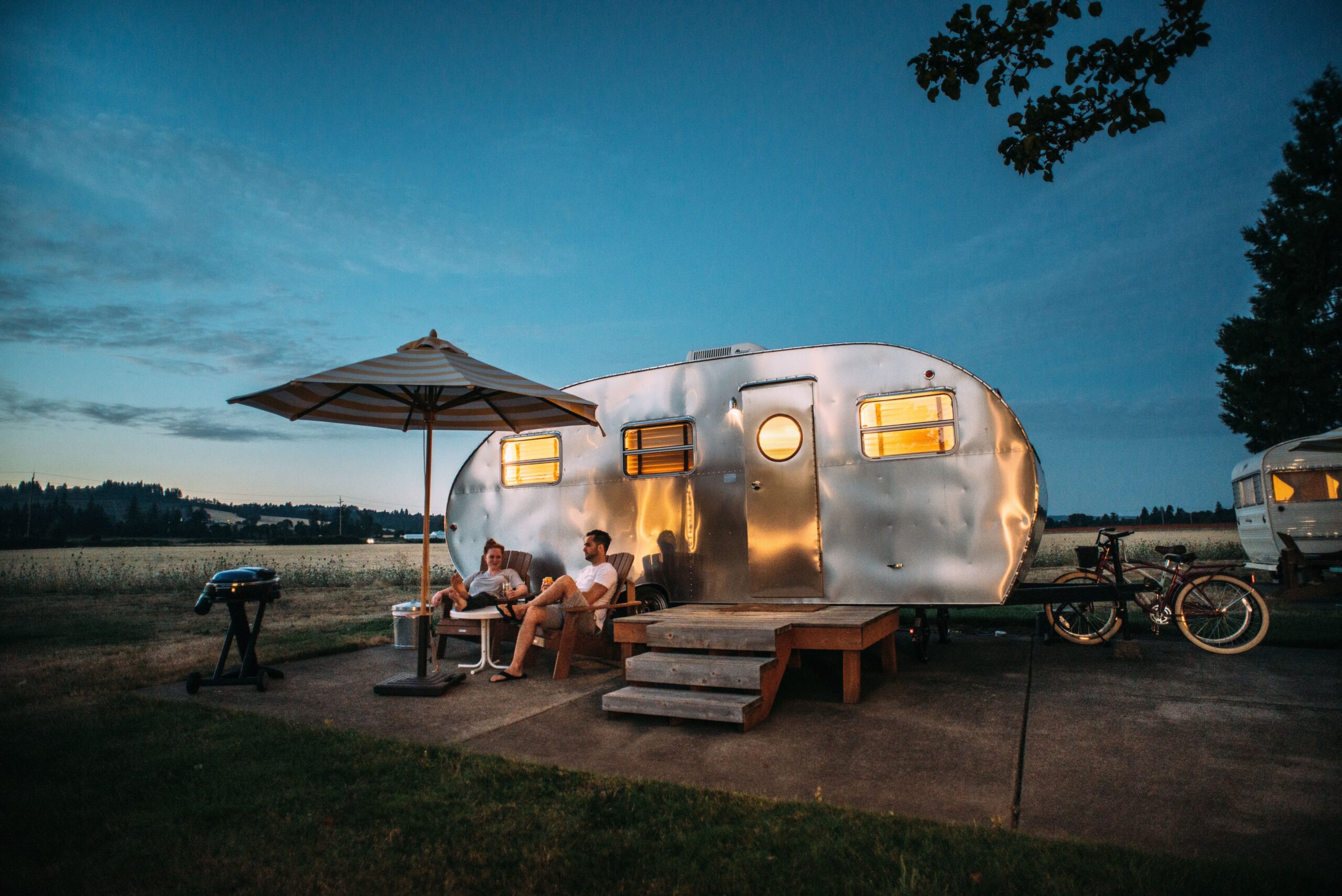Derek Blyth takes you on micro adventures to L-Spots, hidden and exciting places in the Low Countries. This week he hits the road in a very Dutch phenomenon, the caravan.
They appear in the spring, like daffodils. You see them on motorways across Europe, heading in every direction. It isn’t too long before you hear the first Dutch traffic report involving a caravan that has blown over, blocking the A2 heading south.
Love them or hate them, Dutch caravans are not going to go away. The Dutch have more caravans per head than any other country. They drag around 450,000 of them, with a further 20,000 sold every year. At least one in ten families owns one.
During the winter, the caravans take up a lot of space in this already overcrowded country. You sometimes see huge abandoned greenhouses filled with wintering caravans, as if they are growing them from seed.

© Blake Wisz
The most popular brand is called Kip, which means Chicken. It is manufactured in Hoogeveen by a coachwork company founded in 1934. After launching its first caravan in 1947, Kip expanded rapidly in the 1960s as the family holiday became an essential element of Dutch identity.
In the early days, the caravan was an adventure. When asked to explain the appeal of caravans, the director of Kip replied: “As a nation, the Dutch love freedom.” It started with the revolt against the Spanish. Now it’s a Kip hooked to the back of your Opel.
With your house on wheels, you can escape everyday routine and live a nomadic life. Only now it is more about safety and a quiet night. “Ten pros of a Kip,” it says on the company website. The list mentions safety, durability and a roof that reduces rain noise. But not a word about freedom.
 Interior of a caravan
Interior of a caravan© Bailey Australia Caravans
Now the caravans have become much bigger. They are like small furnished houses with fully-equipped kitchens, comfortable beds, air conditioning, satellite TV and wifi. And there are more than half a million of them on the road, heading south like migrating birds. The Dutch are coming.












